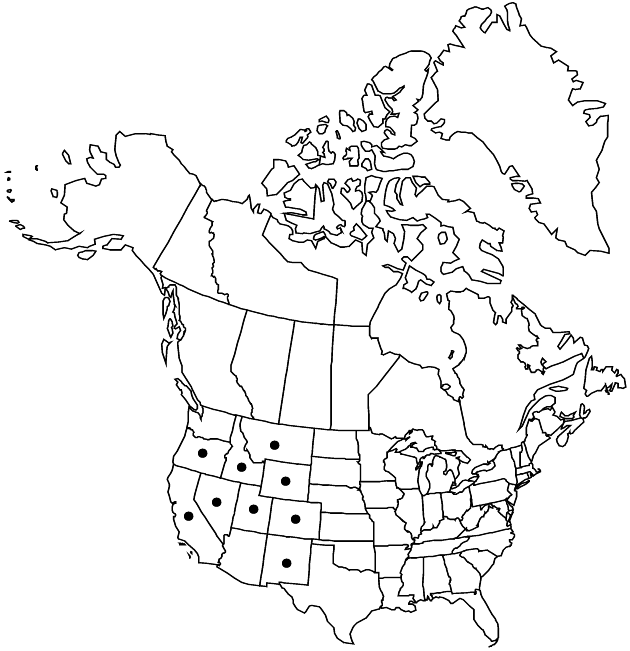Difference between revisions of "Tetradymia spinosa"
Bot. Beechey Voy., 360. 1839.
FNA>Volume Importer |
FNA>Volume Importer |
||
| Line 46: | Line 46: | ||
|publication year=1839 | |publication year=1839 | ||
|special status= | |special status= | ||
| − | |source xml=https://jpend@bitbucket.org/aafc-mbb/fna-data-curation.git/src/ | + | |source xml=https://jpend@bitbucket.org/aafc-mbb/fna-data-curation.git/src/8f726806613d60c220dc4493de13607dd3150896/coarse_grained_fna_xml/V19-20-21/V20_1422.xml |
|tribe=Asteraceae tribe Senecioneae | |tribe=Asteraceae tribe Senecioneae | ||
|genus=Tetradymia | |genus=Tetradymia | ||
Revision as of 15:20, 18 September 2019
Shrubs, 10–100 cm. Stems 1–5+, erect or spreading, spiny, evenly pannose. Leaves: primaries forming recurved spines, 5–25 mm; secondaries linear-filiform to spatulate, 3–25 (× 1–2) mm, glabrous or glabrescent. Heads 1–2 (in axils of spines). Peduncles 5–30 mm. Involucres hemispheric, 8–12 mm. Phyllaries 4–6, oblong to ovate. Florets 5–8; corollas pale to bright yellow, 6–10 mm. Cypselae 6–8 mm, copiously pilose (hairs 9–12 mm); pappi of ca. 25, subulate scales 6–9 mm. 2n = 60.
Phenology: Flowering spring.
Habitat: Usually sandy soils of alkali sinks, shadscale scrub, pinyon-juniper woodlands
Elevation: 800–2400 m
Distribution

Calif., Colo., Idaho, Mont., Nev., N.Mex., Oreg., Utah., Wyo.
Discussion
Selected References
None.
Lower Taxa
None.
